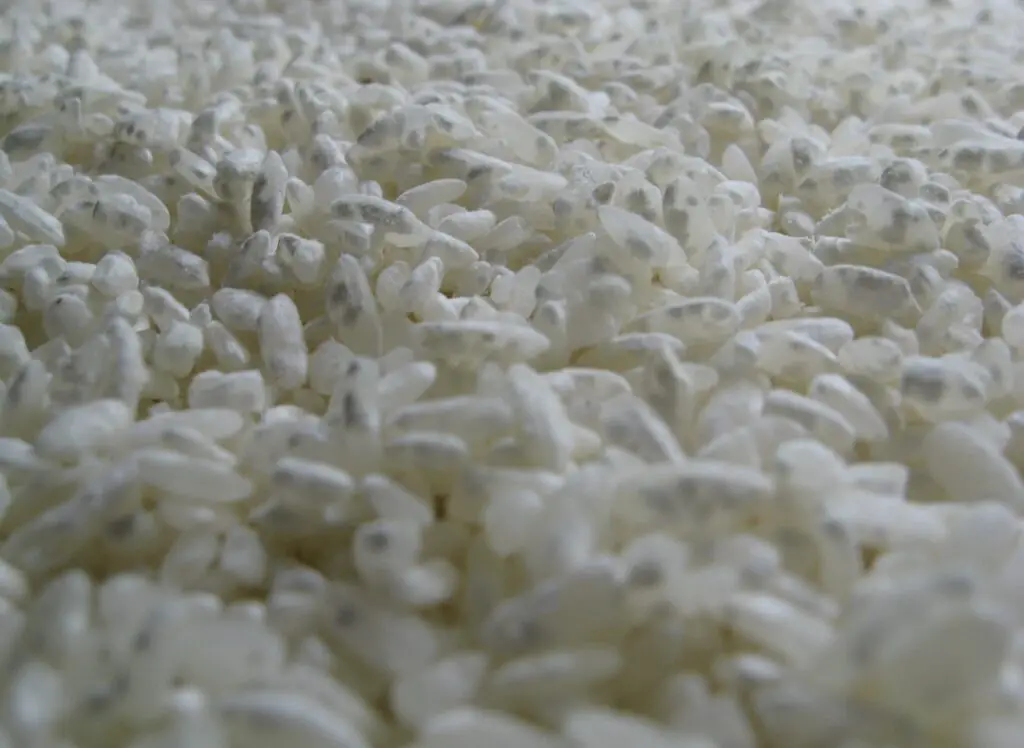A lot of people think of beer as being made from barley, hops, water, and yeast. But have you ever thought about brewing beer with rice?
Brewing beer with rice is a fascinating process that can result in a light and clean-tasting brew that’s perfect for those hot summer days. So, let’s dive into the art of brewing beer with rice.
The main question is: How do you brew beer with rice? The answer is by incorporating rice into your grain bill, preparing it properly for brewing, and then following your standard brewing process.
The Role of Rice in Beer Brewing
Rice plays a key role in beer brewing, especially in the production of light lagers and pilsners. It contributes significantly to the alcohol content of the beer without adding excessive body or flavor. Rice is a rich source of fermentable sugars, which yeast metabolizes to produce alcohol.

Rice is often used as an adjunct grain, meaning it’s added in addition to the traditional barley malt. This can help brewers achieve a lighter body and color in their beer, while still maintaining a high alcohol content.
What are some beer brands that use rice?
Let’s delve into how some of these beer brands differ in their use of rice and why they use it in their brewing process:
- Budweiser: Budweiser is one of the most iconic American beer brands that use rice in its brewing process. Rice is used as an adjunct, along with malted barley, in their recipe. The addition of rice contributes to a lighter body and a crisper taste. The use of rice helps create a clean and refreshing profile, making it a popular choice for those seeking a lighter beer with a smooth finish.
- Coors Light: Coors Light is another American beer that employs rice in its brewing. Similar to Budweiser, rice serves as an adjunct alongside malted barley. The inclusion of rice contributes to the beer’s light, easy-drinking character and its ability to remain crisp and refreshing, especially when served cold.
- Sapporo: Sapporo, a Japanese beer brand, also uses rice in its brewing process. However, Sapporo’s approach differs slightly from Budweiser and Coors Light. Sapporo uses a higher proportion of rice in its recipe, resulting in a lighter body and a drier finish. This approach aligns with the traditional Japanese preference for clean and smooth-tasting lagers.
- Asahi Super Dry: Asahi Super Dry, another renowned Japanese beer, is known for its distinctive “karakuchi” (dry) taste. The beer’s dryness is achieved by utilizing a higher percentage of rice in the brewing process, along with a longer fermentation period. The result is a crisp and refreshing beer with a pronounced dry finish.
- Singha: Singha, a Thai beer brand, incorporates rice in its brewing alongside malted barley. The use of rice in Singha contributes to its light and refreshing character, making it well-suited for tropical climates. It imparts a slightly sweet note, which complements the beer’s overall profile.
- Tsingtao: Tsingtao, a prominent Chinese beer, uses rice in its brewing process, just like its counterparts. The addition of rice aids in creating a clean and smooth taste, typical of many Asian lagers. It contributes to a light-bodied and mildly sweet beer, making it a popular choice both in China and internationally.
While all these beer brands use rice to enhance their brewing process, the quantity of rice used can vary between brands.

Sapporo and Asahi Super Dry, for instance, are known for using a higher percentage of rice compared to Budweiser and Coors Light. The amount of rice used can significantly impact the beer’s flavor, body, and finish, offering a diverse range of options for beer enthusiasts with different taste preferences.
Choosing the Right Rice for Brewing
Not all rice is created equal, especially when it comes to brewing beer. The type of rice you choose can have a big impact on the final product. Short-grain or medium-grain rice is traditionally used in beer brewing because of their high starch content.

It’s also important to note that you can use either white or brown rice for brewing. Brown rice will contribute a slight nutty flavor to the beer, while white rice will result in a cleaner taste.
Preparing the Rice for Brewing
Preparing the rice for brewing is a crucial step in the process. This usually involves cooking the rice to gelatinize the starches, making them accessible for the brewing enzymes to break down into fermentable sugars.
To prepare the rice for brewing, simply rinse the rice thoroughly under cold water, and then cook it according to the package instructions.
Using Koji to pre-ferment the rice (Sake style!) releases more sugars
Using Koji mold for pre-fermenting rice in beer brewing is an intriguing process that introduces unique flavors and textures to the final product.
Koji, also known as Aspergillus oryzae, is a mold commonly used in Asian cultures for fermenting soybeans and making alcohol, such as sake.

It serves as a starch converter, breaking down the rice’s starch into sugars that can be fermented by yeast during the brewing process.
Here’s how Koji mold can be used for pre-fermenting rice in beer brewing:
- Understanding the Role of Koji Mold:
Koji mold plays a vital role in sake brewing, as sake rice does not contain the enzymes required for converting starch into sugar, unlike barley used in traditional beer brewing. The mold produces enzymes that break down the rice’s starch into fermentable sugars, which is crucial for the fermentation process. - Brewing with Koji-Activated Rice:
When using Koji mold for pre-fermenting rice in beer brewing, a koji-rice starter is typically employed. The process involves adding the koji-rice starter and some steamed rice to the wort during primary fermentation. The koji-rice starter provides the necessary enzymes to convert the rice starch into sugars, making it suitable for fermentation. - The Brewing Process:
The beer brewing process begins by creating a wort, a liquid mixture of malted barley, water, and hops. After this initial step, the koji-activated rice is introduced to the wort during primary fermentation. The enzymes produced by the Koji mold work to break down the rice’s starch into sugars, making the wort fermentable. - Timing of Koji Addition:
One aspect that requires careful consideration is the timing of adding the Koji-activated rice. As mentioned in a Reddit post, brewers have different approaches. Some may add the Koji during the mashing stage, but the high heat during boiling might kill off the active bacteria/spores in the Koji. Alternatively, adding the Koji during fermentation carries the risk of introducing unsanitary elements that could potentially infect the beer. - Monitoring Fermentation:
During the fermentation process, it is essential to monitor the progress carefully. As stated in the Brewer’s Friend recipe notes, apparent attenuation can end up above 100% due to continued sugar creation in the wort, courtesy of the Koji mold. Final Brix and FG (Final Gravity) measurements are useful for determining the alcohol by volume (ABV) of the beer.
Koji-activated rice adds a unique twist to beer brewing, and it has been used experimentally in recipes like the Koji activated rice ale mentioned on Brewer’s Friend [1].

Additionally, there are examples of breweries incorporating Koji mold into craft beer, as seen in the case of Oryzae Brewing & ferment works in Japan [6].
The process requires careful attention to timing and sanitation, but it can lead to exciting and innovative flavor profiles in the world of beer brewing.
Adding the Rice to the Mash
When it comes to adding the rice to the mash, timing is everything. The rice should be added during the mash stage of the brewing process. This is when the malted barley is soaked in hot water to activate the enzymes that convert the grain’s starches into sugars.
The rice should be added to the mash after it has been cooked and cooled. This will allow the enzymes from the malted barley to break down the starches in the rice, turning them into fermentable sugars.
Fermentation and Fining
After the mash and boil stages are complete, it’s time for fermentation. This is when the yeast is added, and it begins to eat the sugars, creating alcohol and CO2.
Fermentation with rice usually takes a bit longer than with barley malt alone, so be patient. After fermentation is complete, the beer is fine-tuned through a process called fining, where any remaining solids are removed from the beer for a clear, crisp finish.
The Final Product: Rice Beer
The final result of brewing beer with rice is a light, crisp beer with a clean taste. It’s an excellent choice for hot weather or for those who prefer a less robust flavor profile. While rice beer may not be as full-bodied or complex as some other styles, it certainly has its place in the beer world.
Rice beer is a refreshing alternative that can be enjoyed by beer enthusiasts and casual drinkers alike.
Benefits of Using Rice in Brewing
Lighter Flavor and Body
One of the main advantages of using white rice as a fermentable sugar source in brewing is that it produces a lighter flavor and body. This can be desirable in beers such as lagers and pilsners, which are known for their crisp, clean taste.
Cost-Effective
Another benefit of using white rice in brewing is that it is often more cost-effective than other grains, such as barley or wheat. This is especially true in regions where rice is a staple crop and can be easily sourced at a lower cost.
Gluten-Free Alternative
For those with gluten sensitivities or celiac disease, using white rice in brewing can provide a gluten-free alternative to traditional grains like barley and wheat. This allows for the creation of gluten-free beers that can be enjoyed by those with dietary restrictions.
Drawbacks of Using Rice in Brewing
Lower Nutritional Value
One of the main drawbacks of using white rice in brewing is its lower nutritional value compared to other grains. White rice is a refined grain, meaning that it has been stripped of its bran and germ layers, resulting in a loss of fiber, vitamins, and minerals.
Limited Flavor Profile
While the light flavor and body of white rice can be an advantage in certain beer styles, it can also be seen as a drawback for those looking to create more complex and flavorful brews. The limited flavor profile of white rice may not provide the desired depth and character in some beer styles.
Popular Beverages Made with Rice
Sake
Sake, also known as rice wine, is a traditional Japanese alcoholic beverage made from fermented rice. Sake can range in flavor from sweet to dry and can be served chilled, room temperature, or warm. It is commonly enjoyed with sushi and other Japanese cuisine.

Rice Beers
Various types of rice beers can be found around the world, particularly in Asia and Africa. These beers often have a lighter flavor and body compared to beers made with barley or wheat.
Conclusion
In conclusion, brewing beer with rice is an interesting and rewarding experience. While it may be a bit more challenging than brewing with barley malt alone, the end result is well worth it.
So, here are 10 interesting facts about brewing beer with rice:
1. Rice is used as an adjunct grain in beer brewing.
2. It contributes to the alcohol content of the beer without adding excessive body or flavor.
3. Short-grain or medium-grain rice is best for brewing due to their high starch content.
4. Both white and brown rice can be used for brewing.
5. The rice must be cooked and cooled before adding it to the mash.
6. The enzymes from the malted barley break down the starches in the rice during the mash stage.
7. Fermentation with rice usually takes longer than with barley malt alone.
8. The final product is a light, crisp beer with a clean taste.
9. Brewing beer with rice can be a bit more challenging than brewing with barley malt alone.
10. Rice beer is a refreshing alternative that can be enjoyed by beer enthusiasts and casual drinkers alike.
Go ahead, try brewing beer with rice and enjoy the unique and refreshing taste it offers. Happy Brewing!
FAQs
Which beers are made out of rice?
Some popular beers made with rice include Japanese lagers like Asahi Super Dry and Sapporo, as well as American light lagers such as Budweiser and Coors Light. Rice is used in the brewing process to lighten the body and create a crisp, clean taste.
Are all beers made with rice?
No, not all beers are made with rice. While rice is used in some beer recipes, it is just one of many potential ingredients. The choice of ingredients in beer production varies widely and can include malted barley, wheat, corn, oats, and various other grains.
Why does some beer have rice?
Some beer recipes include rice as an adjunct ingredient for various reasons. Rice can help lighten the body and flavor of beer, making it crisper and more refreshing. It can also contribute to a drier finish and enhance the overall drinkability. Additionally, rice is often used in brewing certain styles like American lagers or Asian rice lagers, where it is a traditional ingredient.
Why do some beers use rice?
Some beers use rice as an adjunct ingredient for various reasons. Rice is often used to lighten the body and flavor of the beer, resulting in a crisper and cleaner taste. It can also help increase the alcohol content without adding too much sweetness. Additionally, rice is highly fermentable, meaning it can be easily converted into alcohol by yeast during the brewing process. Overall, the use of rice in beer brewing can contribute to a lighter and more refreshing beer profile.
Does all beer contain rice?
No, not all beer contains rice. While rice is commonly used in certain beer styles, such as some lagers and light beers, many other styles of beer are brewed without rice. The use of rice in beer recipes is a matter of choice and can vary depending on the brewer’s preferences and the desired characteristics of the beer.
Why do American beers have rice?
American beers often include rice as an adjunct because it contributes to a lighter and crisper flavor profile. Rice helps to create a clean and refreshing taste, as well as a lighter body and color in the beer. Additionally, rice aids in fermentability and can help to produce a drier finish.




